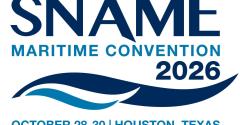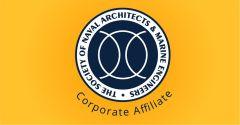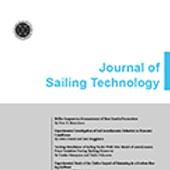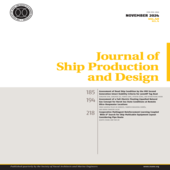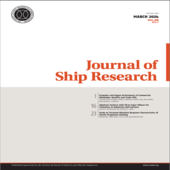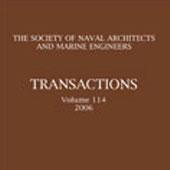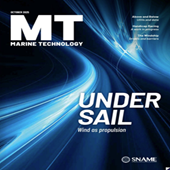The Atomic Energy Panel, M-13, was organized in 1955 under the sponsorship of the Ships Machinery Committee of the Society of Naval Architects and Marine Engineers to collect such information regarding nuclear power as would be of interest to the members of the Society and to consider the impact of the application of nuclear power to merchant ships. Later that year the Coast Guard, recognizing the need for a considerable study of the problems involved, and the desirability of industry participation in such a study, requested the Society to authorize its Atomic Energy Panel to act in an advisory capacity to the Coast Guard in the development of recommendations for the safe application of nuclear power to merchant ships.
The Society agreed to this request and expanded the Panel to include members who are knowledgeable in design, application, construction, and operation of nuclear reactors as well as representatives of ship designers, builders, and operators. Since that time the Panel has devoted its attention primarily to the preparation of this document. The basic difference in. the safety problem between a nuclear-powered ship and a conventionally powered one is that provision must be made to control, under all foreseeable circumstances, the radioactivity which results from the fission process. Sufficient experience is now available to show that a serious nuclear accident will not happen if the design is adequate, the equipment is sound and proper operating procedures are followed. In addition, it is only through intensive design effort that a "bomb reaction" can be obtained, thus relegating the maximum energy release to the order of that of a small chemical explosion. Significantly, for the reactor types under consideration, this energy yield and associated fissionable material can be contained by suitable closures to prevent the uncontrolled release of radioactive material. The type of fuel used, the fuel cladding, the primary coolant system, the containment system, and the ship's hull are examples of the extensive safety back-up against the loss of radioactive material. As a practical matter it has been considered that until more actual experience has been obtained, nuclear reactors will be installed in merchant ships of fairly large size only. Consideration has been given to the results of past marine casualties involving similar size ships and the recommendations have been made with the intent of preventing the dangerous uncontrolled release of fission products in the event of such casualties. In particular, the work of the Panel has consisted of consideration of only two reactor types and ten general categories, as is indicated in the title and shown in the table of contents. In these areas, the panel has attempted to consider questions such as containment, waste disposal, and ship operation on as realistic a basis as is now possible considering the present lack of actual operating experience, so that the nuclear-propelled ship will be reliable and safe, it is of particular importance to understand that these recommendations are intended to supplement, and not to replace any part of two areas of safety considerations already established, i.e. the overall question of reactor safety as considered by the United States Atomic Energy Commission through the Advisory Committee on Reactor Safeguards under the Atomic Energy Act of 1954 and the question of pennissible radiation exposure for crew and whole population as established by applicable A.E.C. licensing regulations.
In addition, it is recommended that the nuclear ship meet the highest safety standards represented by the normal requirements of the U.S. Coast Guard and the American Bureau of Shipping with regard to the non-nuclear features of the design. The work of the Panel may be summarized by the following tentative conclusions:
1. Water-cooled and water-moderated reactors can provide safe, reliable propulsive power without imposing new operational restrictions on the ship as compared to conventionally-powered ships except for the special provisions during refueling and radioactive waste disposal.
2. Rules, regulations and inspection should ultimately be established to ensure that a nuclear-powered ship meets or exceeds the minimum requirements as regards safety and equipment, in a manner similar to that imposed for certification of conventional ships.
3. The following sections are intended to provide a guide for such rules and regulations which may be used during the interim period preceding accumulation of actual operating experience of nuclear-powered ships.


